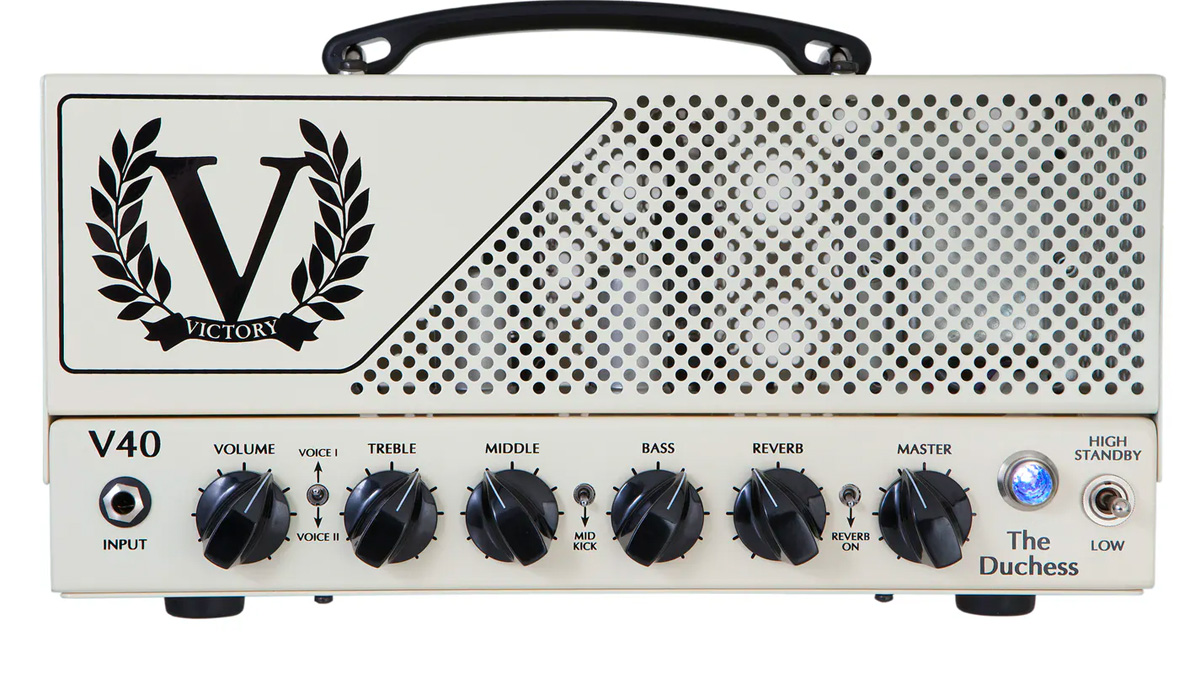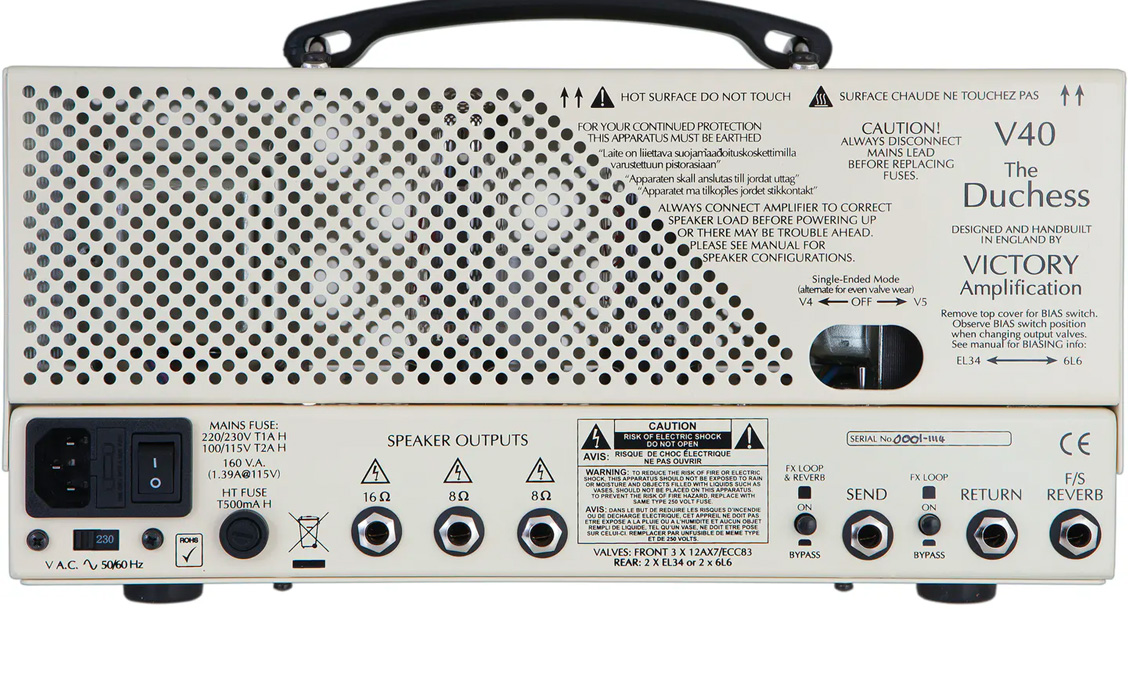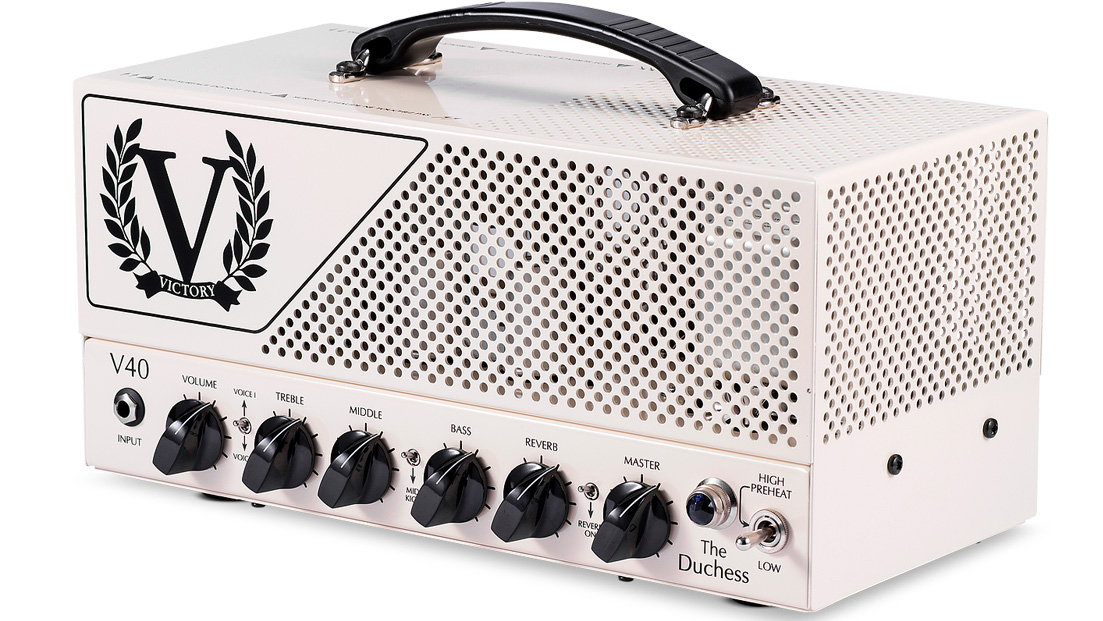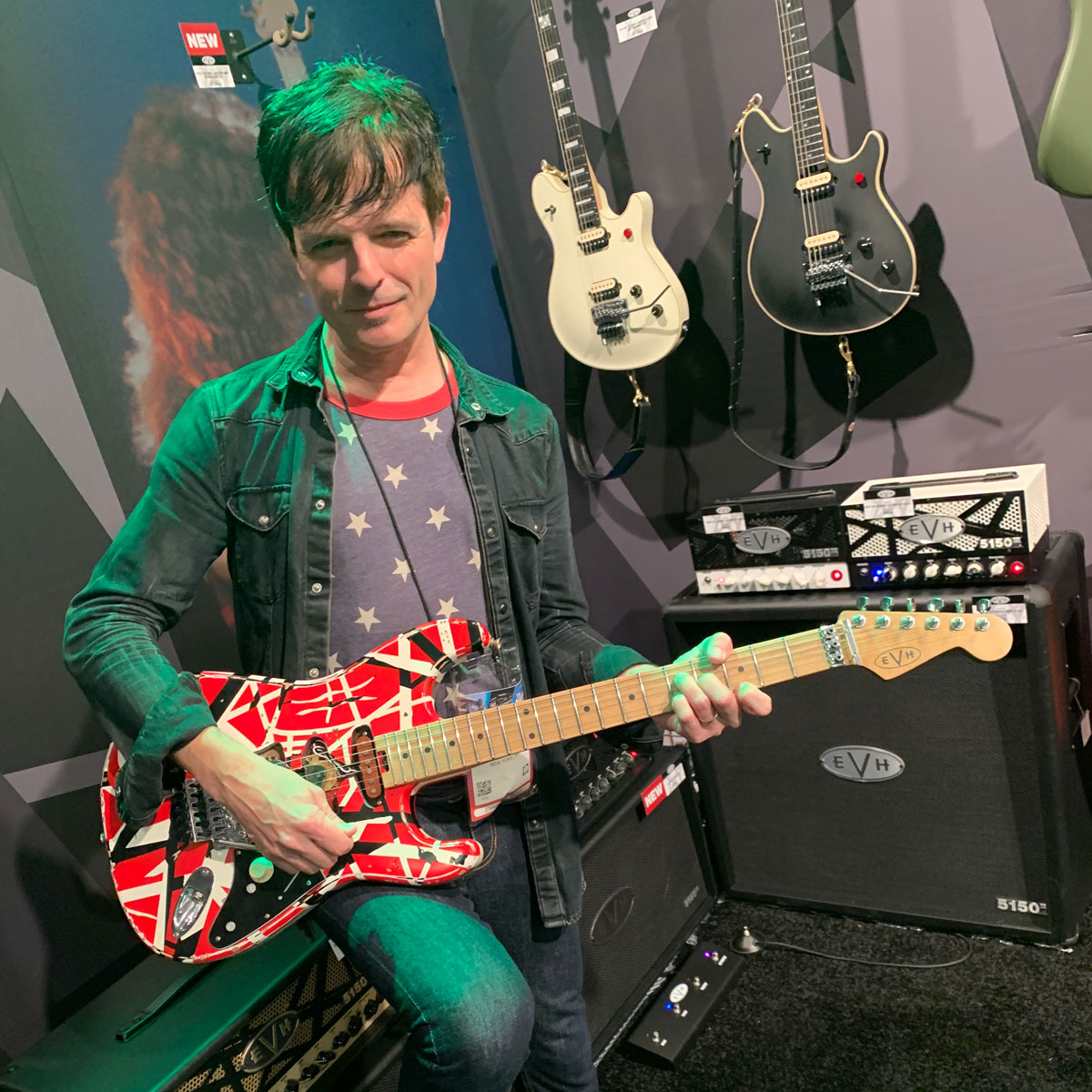Guitar World Verdict
The spectacular Victory V40 “The Duchess” coaxes a wide range of low-to-medium drive tones and silky cleans that sound massive on their own, or further enhanced when combined with stompboxes as a pedal platform.
Pros
- +
Incredible US and British tones.
- +
Excellent pedal platform.
- +
Switchable power.
Cons
- -
None.
You can trust Guitar World
What do guitar players like Richie Kotzen, Guthrie Govan and Rabea Massaad have in common? Besides being terrifyingly accomplished guitarists, the many outstanding tones you may have heard on their recordings and live appearances come courtesy of Victory Amplifiers – a UK brand that’s fast becoming a rising star among boutique guitar amp companies.
Victory is the brainchild of chief designer Martin Kidd (of Cornford amplifiers fame), together with a team of engineers that hand-build these colorful, distinctively voiced amps. Scrolling through Victory’s diverse tube-amp series will reveal its amps come in the classic big-box deluxe head format or as a portable lunchbox head, along with matching speaker cabinet options.
They also recast versions of its amp series in powered or preamp pedals, but as far as combos, there are only three at the time of writing. For this review, I was able to check out the V40. While it’s not the company’s latest offering, I chose The Duchess for its detailed American and British voicings, and as an introduction to the fantastic amplifiers Victory is producing.

Features
For a lunchbox-style amp that’s elegantly designed, tidily hand-wired and neatly compact, the roadworthy V40 is a breath of fresh air to lug around at a lightweight 18.1 lbs. But don’t be fooled by its weight class; The Duchess packs a powerful punch as a 42-watt, single-channel amp driven by a pair of EL34 tubes (that can also be swapped for 6L6 tubes) and three 12AX7 preamp tubes.
Its broad tone-shaping options are accessed via a two-position Voice switch (Voice I and II) and Mid-Kick switch, as well as a footswitchable digital reverb with hard bypass switch. The large stovetop-style controls for Volume, Treble, Middle, Bass, Reverb and Master have a smooth taper and feel substantial on your fingertips.
The amp’s front panel standby switch can be flicked to full power or low power (7 watts); and you can select either power tube for Class A operation in single-ended mode (on rear panel) when in low-power operation, which together will take the output down below 1 watt RMS.
Other features include a series effects loop with hard bypass, rear-panel power switch, speaker outs for 16 ohm and dual 8 ohm (wired in parallel) and a reverb footswitch jack. The amp comes complete with a padded carrying case and footswitch for reverb.
Performance
The V40’s tonal wheelhouse sits in the clean-to-mildly dirty range, and it’s probably the most warmly transparent amplifier I’ve ever encountered. Also, if multiple stompboxes are your primary source of tone-shaping when using it, you won’t be able to wipe the grin off your face when you hear how well pedals complement the V40.
The controls react exactly as intended; dialing back Volume and upping the Master sets up gorgeous cleans, and cranking both volume and master will nudge the amp towards musically rich overdrive. But it’s all about how you wish to voice it: Setting all controls midway, with Voice I activated and the Master relatively low, and auditioning both open-back 2x12 and 4x12 cabinets (loaded with Celestion Creambacks and V-Type speakers respectively), the V40 draws out the classic soft and supple tones reminiscent of mid-'60s Fender combos, albeit at a much louder clip.

Players who dabble between jazz and blues will find all the sustain and touch sensitivity becoming glaringly present here at full power, where the amp blooms with a natural compression that smooths the highs and firms up the mids and low end.
Flicking the switch over to Voice II and increasing the volume ramps up some gritty bite that closely duplicates the snappy attack of Tweed-era amps when using single-coils, and downing the Mid-Kick switch easily ups the ante in aggression for humbuckers.
Low power mode certainly tames the output by adding some compressed squish and if you like that cushioned tone, you’ll dig how loose it feels. What’s more, the built-in digital reverb is so beautifully ambient in its hybrid hall-meets-plate sounds, you’ll almost forget you can remove it from the circuit entirely – but really, it’s so lush you’ll want it on all the time.
The amp is enthralling in just about all it does, so if it lacks anything it would be high-end sparkle, which is not a bad thing and may only be a matter of swapping to 6L6 tubes and Alnico speakers to possibly remedy that. Regardless, I can genuinely declare the V40 is an even-tempered clean machine with balance and bite, and frankly, I’d choose this amp over anything else when faced with the many standard backline choices.
Specs
- PRICE: $1,399 / £1,099
- ORIGIN: UK
- TYPE: Valve lunchbox amp
- OUTPUT: 42, 7, 1.6, 0.5 watts RMS
- VALVES: 3 x 12AX7, 2 x EL34 as standard (switchable to 6L6)
- DIMENSIONS: 342(w) x 185(h) x 185(d)
- WEIGHT (kg/lb): 8.2/18.1
- CABINET: Pressed steel
- CHANNELS: 1
- CONTROLS: Volume, Bass, Mid, Treble, Master Volume, Reverb, Mid Kick switch, Voice switch
- FOOTSWITCH: Reverb on/off footswitch (supplied)
- ADDITIONAL FEATURES: Two-position Voice switch, Mid-Kick switch, footswitchable digital reverb with hard bypass option, series effects loop with hard bypass,
- CONTACT: Victory Amps
Paul Riario has been the tech/gear editor and online video presence for Guitar World for over 25 years. Paul is one of the few gear editors who has actually played and owned nearly all the original gear that most guitarists wax poetically about, and has survived this long by knowing every useless musical tidbit of classic rock, new wave, hair metal, grunge, and alternative genres. When Paul is not riding his road bike at any given moment, he remains a working musician, playing in two bands called SuperTrans Am and Radio Nashville.
"I never use my tube amp at home now, because I have a Spark Live": 5 reasons you should be picking up the Positive Grid Spark Live in the massive Guitar Month sale
“Our goal is to stay at the forefront of amplification innovation”: How Seymour Duncan set out to create the ultimate bass amp solution by pushing its PowerStage lineup to greater heights












